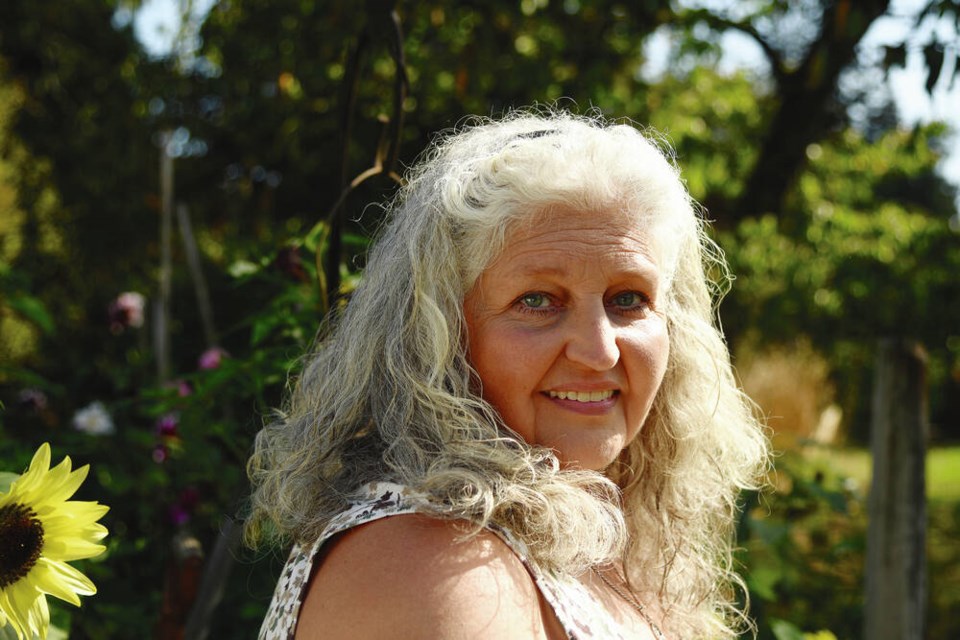When Melanye Walker reached into a small pond on her Chemainus farm and scooped up a handful of debris, she was shocked to pull out a decomposing bat.
After the bat later tested positive for rabies, she’s warning others to take precautions, so they don’t have to go through the same experience.
She said she was cleaning the kidney-shaped pond with her bare hands in early August when she discovered what she initially thought was a toad. “Then I saw the wing bones of a bat and I thought: ‘Oh shoot.’ ”
Once inside her home, she “washed and washed and washed and washed” her arm and right hand.
Walker called the Ladysmith Community Health Centre, where a doctor stressed it was important for her to come in for care. She brought the bat carcass to the centre in a baggie.
She was then sent to Cowichan District Hospital to receive 10 injections in her upper arms, thighs and buttocks, the first in a series of vaccines. Afterwards, her joints hurt and she experienced flu-like symptoms, but without the vaccines, rabies can be fatal.
Dr. Rahul Walia, a resident medical health officer with Island Health, said if vaccinations to prevent the disease are not administered before the onset of symptoms, death is almost certain.
The rabies vaccination is extremely effective when administered correctly and promptly, Walia said. “It is nearly 100 per cent effective at preventing the onset of rabies in humans if given before symptoms appear.”
Symptoms generally show up three to six weeks after exposure and can include headaches, fever, difficulty swallowing, excessive drooling, muscle spasms and weakness, he said.
Walker said she was initially unsure if she needed attention and discovered that others were not clear on what to do, prompting her to post about her experience on social media.
“The message I want to deliver is to avoid contact with bats at all costs. If like me you have accidental contact get medical attention immediately.”
Walker’s warning comes after an Ontario resident contracted rabies this month, also via contact with a bat, and had to be hospitalized.
Dr. Kieran Moore, Chief Medical Officer of Health in Ontario, said in a statement that it was the first domestically acquired case of human rabies in Ontario since 1967.
Across Canada, there have been only 26 other known cases of rabies in humans since reporting began in 1924, said Moore, who warned anyone who has direct physical contact with a bat to seek immediate medical attention, even if there is no visible bite or scratch.
“The health care provider, in consultation with the local public health unit, will assess the risk of rabies and may offer vaccines to prevent infection.”
Walker, 61, headed to Las Vegas the day after her first injections to spend time with her two adult daughters. While there, she received the next scheduled vaccine, which cost more than $1,000.
She was at a spa with her daughters when a phone call from Island Health confirmed the bat had rabies. “It was like a punch in the gut.”
“I looked at my girls and said ‘It’s positive’ and the tears started.”
The series of treatment continued after Walker was home, only ending on Aug. 23.
She doesn’t know the species of bat in the pond, saying it fit into the palm of her hand.
Walia said bats are the only known reservoir for rabies in B.C., although transmission to other animals can occur.
About 0.5 per cent of bats in B.C. carry rabies but approximately 11 per cent of bats that are tested in the province are positive for rabies, he said.
“The higher percentage is due to the fact that bats tested are more likely to have come in contact with humans or pets and these bats are more likely to be infected with the virus.”
So far this year, three of the 24 bats submitted for testing in B.C. have tested positive, he said.
For the years 2016 to 2024, a total of 22 out of 192 bats tested were positive, he said.
In that time, 107 B.C. residents were advised to undergo treatment to prevent rabies.
B.C. has seen two human cases of rabies in the last 25 years, including one in 2003 and the most recent in 2019, when a 21 year-old man in Parksville died. It’s believed that a bat flew into the man, striking his hand, in broad daylight.
The man did not develop symptoms linked to rabies until six weeks later.
Walia said each B.C. case involved direct contact with a bat.
“This is really important because if there’s any direct contact, then there is a chance of risk, but there is no risk from observation.
“You cannot contract rabies by simply being in the vicinity of a bat or observing a bat from a distance.”
To safely remove a bat from a home, contact the B.C. Community Bats Program at or a local pest-control company, he said, adding if a pet comes in contact with a bat, the owner should contact a veterinarian.
Pets should have rabies vaccinations to protect themselves and their human contacts, he said.
Anyone who comes into contact with a bat should wash the affected area with soap and water for at least 15 minutes and then seek medical attention, Walia said.
He emphasized that rabies is extremely rare in humans unless there is direct contact with a bat and vaccinations are only necessary after suspected and confirmed exposure.
For more information, Walia recommends going to the B.C. Centre for Disease Control website at .
>>> To comment on this article, write a letter to the editor: [email protected]



